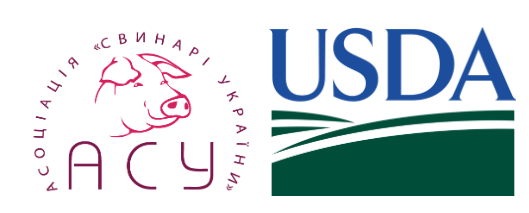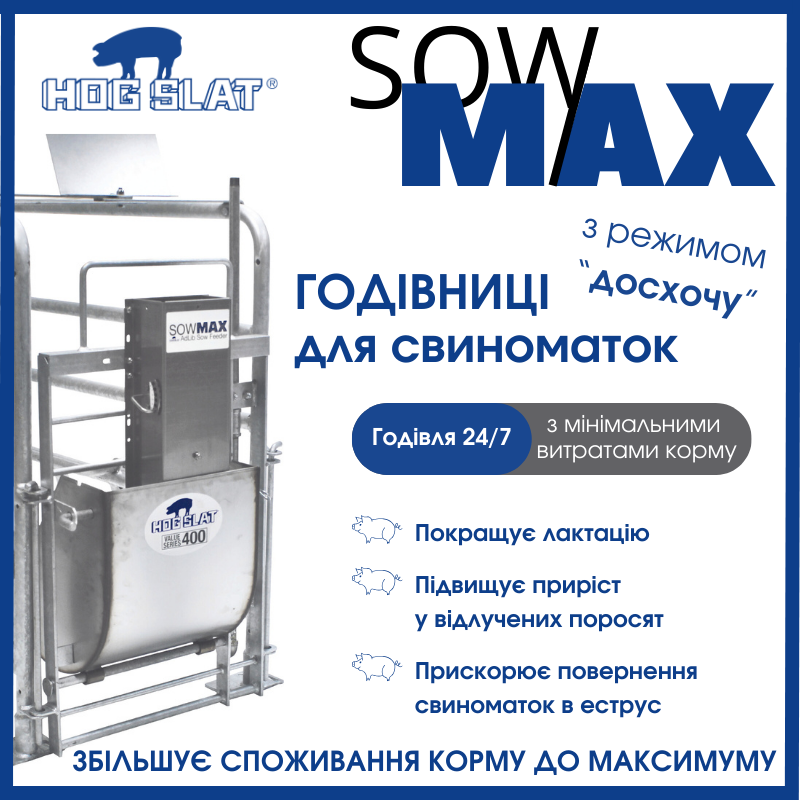 Oksana Yurchenko, President of the Association of Ukrainian Pig Breeders
Oksana Yurchenko, President of the Association of Ukrainian Pig Breeders
"The Paradox of ASF". In each of the definitions of African swine fever (ASF), the disease is called highly virulent: 90% of infected animals will die within two weeks. According to this logic, there should be only 10 live animals left on a farm for every 100 pigs two weeks after infection (90 died). However, in reality, this will not happen, since in reality ASF:
- Low contagious
- Has a long period from the time of infection to clinical manifestation
- The onset of the clinical manifestation of the disease (death of pigs) is very difficult to distinguish from technological mortality
Accordingly, the first thesis voiced by the speakers was that ASF is not what we imagined it to be.
For example, according to comparative studies, one primary case of FMD can cause forty secondary cases (spread of infection to new sites), the ratio for classical swine fever is 1:4, while 29 primary cases are needed to cause one secondary case of ASF (1:0.03).
Hence the second thesis: the control measures taken today only partially take into account the peculiarities of the disease, and therefore are inconsistent. In the case of ASF, it is not enough to "write off" the general control program applied to other infectious transboundary diseases, but instead it is necessary to develop an individual one.
"Ethical dilemma". Such a program must be based on the principles of ethics. This is another aspect that began to be frequently mentioned in the speakers' presentations in the context of the fight against ASF. Is it ethical to wipe out wild pig populations to protect domestic pigs? Is it ethical to destroy uninfected pigs as part of outbreak control measures? It seems that the ethical "dilemma" may become one of the main incentives for changing approaches to ASF control.
"People are the main problem in the spread of ASF". First of all, we are talking about the lack of awareness of producers (both households and farmers) about the importance of biosecurity and, accordingly, the neglect of its important principles and rules, which leads to infection of farms.
It will not be possible to blame wild fauna for everything, at least when it comes to outbreaks in industrial enterprises. The experience of European countries proves (2020-2022) that a wild pig can be the cause of one of 554 cases of ASF in industrial farms. Undoubtedly, the ratio is radically different when it comes to households. Therefore, in recent years, Asian and African countries have been actively working to raise awareness of pig diseases and the necessary biosecurity measures, including through various smart solutions and online platforms.
"Diagnostics in your pocket". When it comes to portable gadgets for diagnosing ASF, scientists have something to brag about. Today, PCR machines and equipment for detecting antibodies to ASF, which can be easily placed in a pocket and used for field diagnostics, are widely used in many countries. Although the EU is not among them, at least not yet. Depending on the method, the examination can last from 15 minutes to 2 hours on average. The cost also varies. For example, a single antibody test will cost about $15. PCR tests will be more expensive.
"ASF vaccine". The results of the trial of live attenuated (attenuated) vaccines were reported by developers from Vietnam and China. However, as the participants of the event noted, there was a lack of information about field trials and more transparent data. After all, when it is stated that the tests were carried out on more than 500,000 pigs and at the same time there is no mention that at least one of them had minor clinical signs (e.g., temperature), there is doubt about the reliability of the claim.
That is why today it is so important to have a single unified standard that will allow the safety and efficacy of candidate vaccines to be tested by an independent party. The World Organization for Animal Health plans to finalize this by June 2024. This will be the starting point in the debate over how effective the vaccines are.
"Partial depopulation". In the event of an outbreak, this approach is practiced in several countries, including Vietnam, Thailand, China, the Philippines, etc. A speaker from Vietnam said that thanks to its use, on average, it is possible to save about 57% (from 3% to 99%) of the livestock. How does it work? If ASF is confirmed on the farm, all animals are tested for ASF. Those who are infected are either eliminated or slaughtered for meat. However, such products are only allowed to be sold within the province where the affected farm is located. On the one hand, as noted by the conference participants, it is more difficult to implement this method the larger the farm, taking into account the cost of research and the need for human resources. Secondly, there are doubts that the circulation of the virus will not stop there and the farm will not report a new suspicion. Thirdly, it is quite difficult to ensure that products made from infected meat do not leave the territory of the province and do not become a source of spread of infection. As a result, there are more questions using this approach than answers and guaranteed positive results.
The last statement concerns the situation with ASF control in general. As three days of information exchange proved, there are many components in approaches to disease management that need to be changed, since they have not proven their effectiveness. There are many innovative things that can be implemented in control programs in the future after efficacy and safety are proven (field diagnostics, vaccination programs). Therefore, there will be many more reasons to get together and once again exchange experience!
The Food and Agriculture Organization of the United Nations (FAO) aims to reduce poverty and hunger in the world by developing agriculture, improving nutrition and addressing food security (access to food for all at all times). It was founded in Quebec on October 16, 1945. The motto is "Helping to build a world without hunger".
The Association of Ukrainian Pig Breeders is a non-profit, voluntary organization founded by Ukrainian pork producers. The main purposes of the association are representation and protection of rights and interests of farms of the association, assistance in development and introduction of new technologies for efficient production of pork, expansion of sales markets, and protection of domestic sales market.



